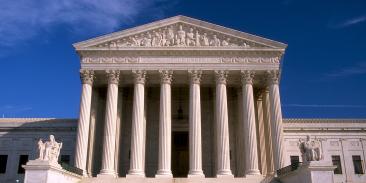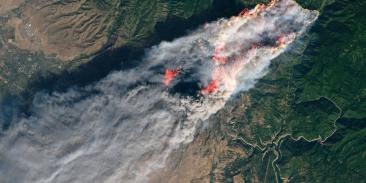EDF Offers Cautious Praise for US Climate Change Plan
“This position is a sign that the US is serious about the need to reduce emissions of greenhouse gases. But it won’t be clear whether the US has really assumed a leadership role until the government proposes specific numerical targets for the next decade, and Congress adopts measures to implement them,” said Michael Oppenheimer, an atmospheric physicist at EDF. A final agreement on numerical targets is expected at the Third Conference of the Parties to be held in Japan next year.
According to recent IPCC findings, if measures are not taken to limit emissions, the warming which would likely occur over the next century would be sufficient to cause widespread disruption of societies and destruction of natural ecosystems. Among the potential consequences of warming are hotter summers, more drought in some places and flooding in others, more extreme rainstorms, higher sea level inundating coastal areas and eroding beaches, a spread in the range of some tropical diseases to the US and other northern countries, and reduced agricultural productivity in developing countries.
Over the coming century, stabilizing greenhouse gas concentrations at the equivalent of 450 parts per million or less of CO2 would guard against disruptive climate change and allow ample time to adapt to modest warming, according to Dr. Oppenheimer. Such a limit would require about a 50% reduction of global CO2 emissions by 2100. In order to achieve this goal, industrial countries like the US need to cut emissions significantly.
“By proposing flexible mechanisms to achieve emissions reductions, the government is giving industry all the incentives it will need to innovate and maintain our competitive edge in new, energy-efficient and renewable technologies,” said Annie Petsonk, EDF international counsel who has been an observer in Geneva this week.
But EDF cautioned that the US was failing to meet its earlier obligation to reduce emissions to 1990 levels by 2000, made at the 1992 Earth Summit in Rio de Janeiro. “We have heard promises before. Once the final numbers are agreed to next year, it will be time for domestic initiatives to push emissions below 1990 levels. In the meantime the administration and Congress could do much more to meet the Rio obligation,” said Petsonk.
With more than 3 million members, Environmental Defense Fund creates transformational solutions to the most serious environmental problems. To do so, EDF links science, economics, law, and innovative private-sector partnerships to turn solutions into action. edf.org
Latest press releases
-
Trump Administration Announces Unlawful Offshore Wind Halt
December 22, 2025 -
Governor Hochul Repeals "100-Foot Rule," Accelerating New York's Clean Energy Future
December 19, 2025 -
Colorado Air Regulators Approve Landfill Methane Standards
December 18, 2025 -
Proposal Would Guarantee Public Access to Air Quality Data
December 18, 2025 -
New Bill Will Help Keep Domestic Manufacturers Competitive
December 17, 2025 -
Satellite Data Shows Colorado Oil & Gas Methane Emissions Dropped as State Rules Took Effect
December 17, 2025










